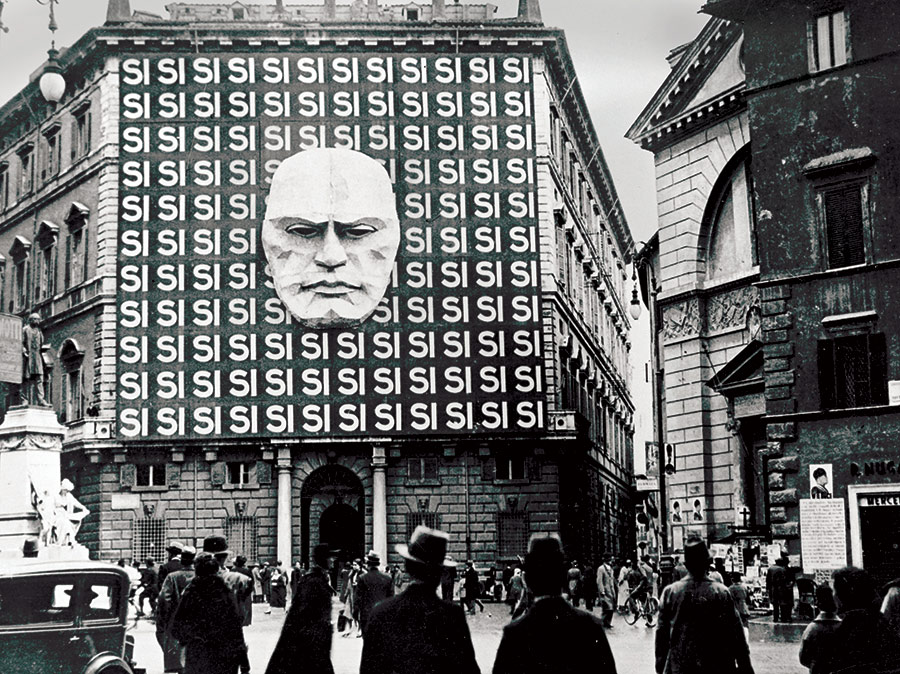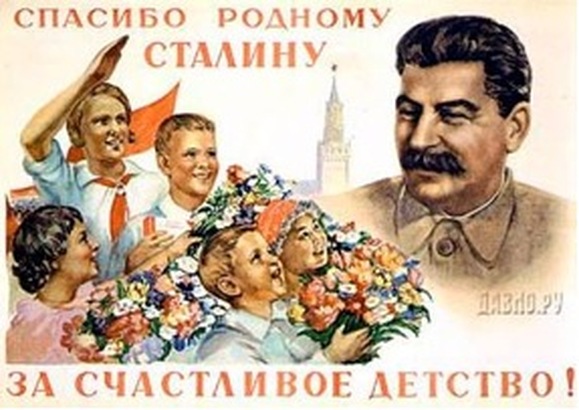Bretnea Turner
Isabela Padilha
AP European History 🇪🇺
335 resourcesSee Units
In an environment of post-WWI bitterness, due to the impact of the League of Nation's punishment on Germany and other defeated states, fascism flourished in some nation-states. The lack of guidance in the restitution of democracy also contributed to the rise of other regimes. Authoritarianism emerged to provide "stability" and attracted the disillusioned through its intense nationalistic rhetoric.
Fascist Propaganda
Different types of propaganda convinced the public that authoritarian leadership was necessary and desirable. While several elements like strengthening the nation through stable economics attracted the population, other aspects were hidden under a guise of nationalism and empty promises. The following propaganda techniques were used in Germany, Italy, Russia, Spain, and many other Eastern European countries. Below are examples with details for how they pertained to German propaganda techniques.
Rallying the Nation
During the democratic period, no single German political party established a majority in Parliament. So when the Nazi propagandists claimed to represent all non-Jewish Germans and promised to unite the country and put the six million unemployed Germans back to work, Hitler received massive popular support. Once the dictatorship was established, Nazi propagandists sold the myth of the "National Community" to Germans longing for unity, national pride, and greatness.
Defining the Enemy
The Nazis used propaganda to exclude specific groups from their society, groups whom they believed did not promote the ideals of an “Aryan” Germany. Nazi propagandists contributed to the regime's policies by identifying groups for exclusion, justifying their outsider status, and inciting hatred or cultivating indifference. In addition, the rise of communism during the time period also helped to promote fascism as an opposition to other ideals.
Indoctrinating the Youth
Why would a society indoctrinate its youth? The Nazi party saw Germany’s “Aryan” youth as critical to the propagation of Nazi ideology and the future of the race. It was important for the Nazi society to include the younger members of society to be in their favor, to avoid rebellion and oppostion. They were included and hailed as important members of German society.
Writing the News
Without a free press, the distribution of Nazi ideas both within Germany and in other countries was controlled by the Nazi government. When the Nazis came to power, there were over 4,700 daily and weekly newspapers published annually in Germany, with over eighty percent of them being privately owned. When free press was eliminated, only one point of view was presented in the government-owned press.
Deceiving the Public
Throughout World War II, Nazi propagandists disguised military aggression aimed at territorial conquest as righteous and necessary self-defense. They cast Germany as a victim or potential victim of foreign aggressors, a peace-loving nation forced to protect its populace or defend European civilization against communism. This was propaganda of deception, designed to fool or misdirect the populations in Germany, German-occupied lands, and neutral countries.
Other Examples
Fascism attempted to take over every aspect of people's daily lives. The nationalistic rhetoric was reflected on many different types of cultural aspects, which led people to be surrounded by these ideals and believe in them.
- Radio: 📻 The use of the radio allowed for mass messaging and didn’t require a newspaper or form of press to publish anything. Radio became really popular during the 1920’s and was used frequently in WWII.
Architecture: Fascist architecture, along with the modernist style of the era, was simple, symmetrical, and resembled an austere version of Roman architecture. One notable building was the headquarters of the Italian Fascist government.

Photo courtesy of History Today
A notable figure in the spreading of fascist ideologies was Joseph Goebbels. He served as the Reich Minister of Propaganda from 1933 - 1945 and coordinated all sorts of media to incorporate nazi ideology, such as newspapers, radio, film, and the arts. He was one of the main architects of the Holocaust and he was a main player in the manipulation of public opinion.
Authoritarian and Fascist Leaders
Benito Mussolini | Italy | By 1922, Mussolini had claimed that only he, as Prime Minister, could fix the inflated economic conditions in Italy. By 1925, he had turned Italy into a dictatorship and named himself Il Duce. Mussolini began his political career as a socialist journalist, then ran his government as a fascist. This included a military police force, long imprisonments for suspected crimes, and the dissolving of the Italian Parliament. Mussolini made friendships with other fascist leaders, and eventually alliances, that he maintained into WWII. |
Joseph Stalin | Soviet Union | Joseph Stalin was able to take over the Soviet Union after the death of Vladimir Lenin. Immediately following Lenin’s death, several usurpers vied for power, but Stalin won over the Soviet government with his Five Year Plans for industrialization. The Soviet Union, like Germany, suffered from hyperinflation after WWI. Socialists and Communists came up with many ways to combat this extreme poverty, but the favorite were plans for mass industrialization, as well as quotas for industrialization to create work for millions of Russian people. Mass industrialization did happen, but wealth never came. The Soviet Union suffered from mass poverty heading into WWII. |
Adolf Hitler | Germany | Adolf Hitler had a military background of being a messenger in WWI and by 1932, had amassed enough popularity to be running for President of the Weimar Republic in Germany. He lost the election to Paul von Hindenberg, but the Nazi socialist party won a majority of votes in the Reichstag (parliament) that year. Therefore, Adolf Hitler was selected as Chancellor of Germany. When President Hindenberg died in 1934, Hitler became the sole dictator. He used rhetoric to create a fear of French, British, American, Jewish, and later Russian people in Germany, and used this fear and mass industrialization to propel Germany into WWII. |
Francisco Franco | Spain | Francisco Franco led nationalist forces in Spain to overthrow the Second Republic in 1939. Both were running in a democratic election, but when Franco lost, he called on the forces of Italy and Germany to help his forces take power, and they did. Franco eliminated anyone who wanted the return of the republic and any of his political enemies from the election to consolidate his power. He promised to bring Spain to greatness, but used poverty and extreme laws and punishments to ensure he would never lose power. |
Fascism in Eastern Europe
Failures to establish democracies in the interwar period allowed for the rise of authoritarian governments in Eastern Europe as well. Economic unrest, anger over the Treaty of Versailles, the rise of anti-Semitism, and the diminished morale of nations ultimately led to fascist or extremely authoritarian groups rising.
- Hungary: Modeled the economic efficiency of Fascist Italy and participated in the Holocaust by deporting over 400,000 Jews to German death camps.
- Croatia: Also modeled Fascist Italy and were responsible for mass murders of Jewish people and Serbian people
- Austria: The Austrian parliament was dissolved by fascists and welcomed the German Anschluss in 1938
- Romania: The Iron Guard, a fascist political party, took power following policies of extreme nationalism, anti-Semitism, and anti-communism, but lacked the efficiency of Italian Fascism.
Economic Modernization
Mass industrialization was all the rage in the late 19th, early 20th centuries. Governments believed that bringing industry to their nation would put the mass working poor populations to work and begin producing a surplus of materials that could be traded to other countries.
This worked well in Italy and Germany, formerly struggling from inflation after WWI. Although Italy had few natural resources, they were able to trade their intellectual services for goods from the Soviet Union. Germany violated the Treaty of Versailles, not through industrialization, but through what they were manufacturing: military products. Germany also eliminated all imports that could be produced or replaced domestically.
Mass industrialization did not work well in the Soviet Union. Joseph Stalin revoked Lenin’s private property policies of his New Economic Policy, and instituted Collectivization and his Five Year Plans. Collectivization consisted of “collecting” private farms to combine them and have mass production of food to combat the famines and create agricultural exports. However, this only created more famines as the Soviet Union was not prepared technologically for mass farming and most exports went to the soldiers fighting in WWII once the war broke out.
Stalin also instituted Five Year Plans that focused on capital goods, such as factories, electricity, and agriculture to speed up production in the Soviet Union. He worried that the more advanced nations would crush them in modern warfare if they were unprepared. However, the Five Year Plans were ruthless, left many injured, overworked, unemployed, and starving. Those who opposed the plans were political adversaries, or those late to work too many times were sent to the gulags or labor camps.

In summary, the interwar period was swept by a wave of anti-democratic regimes that furthered famine, poverty and terror. Oppression was at its rise, in both fascist and communist nations and nationalistic ideals propelled the beginning of another horrific war.
Browse Study Guides By Unit
🎨Unit 1 – Renaissance & Exploration
⛪️Unit 2 – Reformation
👑Unit 3 – Absolutism & Constitutionalism
🤔Unit 4 – Scientific, Philosophical, & Political Developments
🥖Unit 5 – Conflict, Crisis, & Reaction in the Late 18th Century
🚂Unit 6 – Industrialization & Its Effects
✊Unit 7 – 19th Century Perspectives & Political Developments
💣Unit 8 – 20th Century Global Conflicts
🥶Unit 9 – Cold War & Contemporary Europe
📚Study Tools
🤔Exam Skills
👉Subject Guides

Fiveable
Resources
© 2025 Fiveable Inc. All rights reserved.